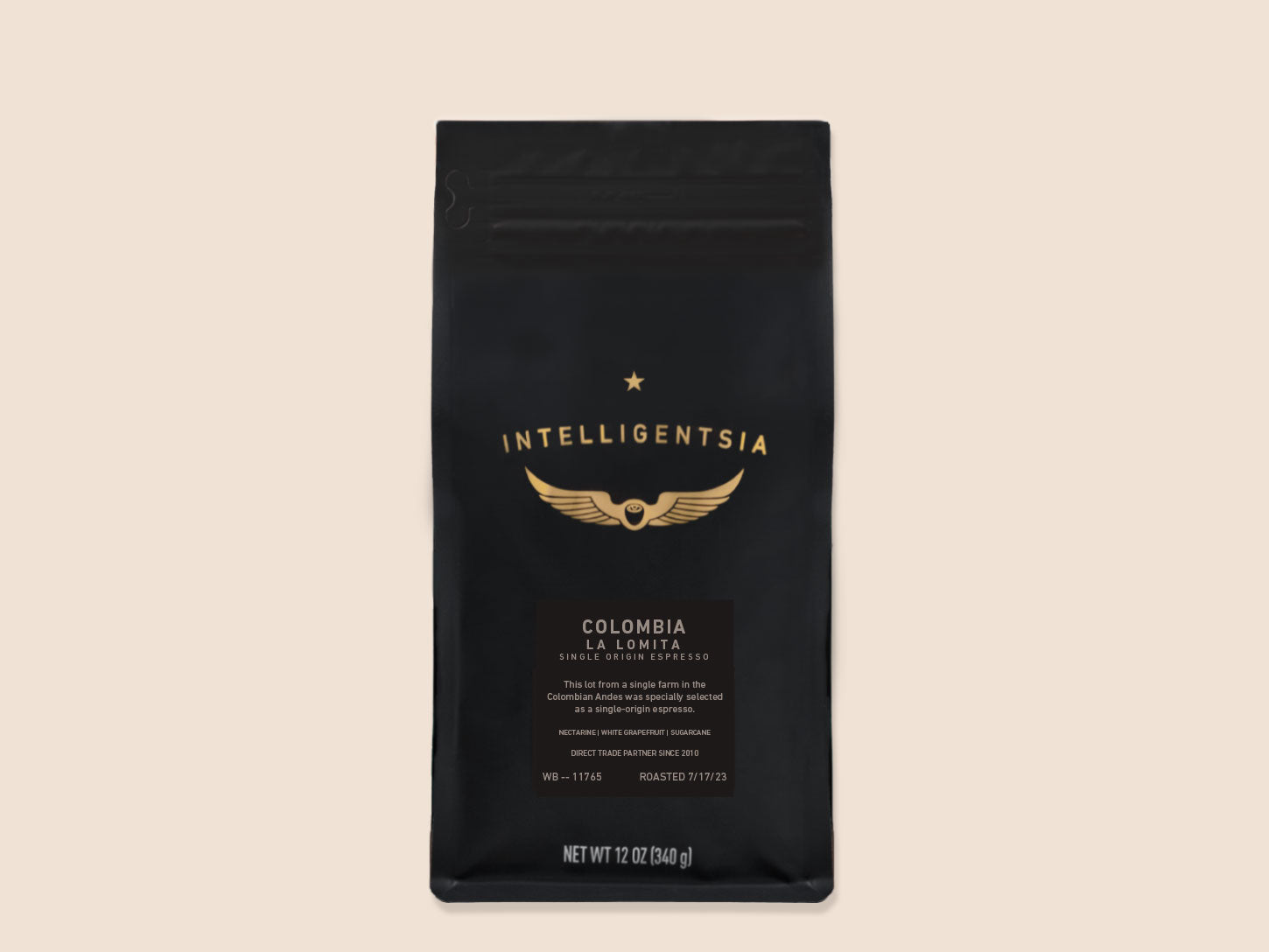Savor the True Quality with Freshly Roasted SOE Single Origin Espresso
Savor the True Quality with Freshly Roasted SOE Single Origin Espresso
Blog Article
Recognizing Coffee Beans: the Journey From Espresso to Blended Coffee Beans

The Origins of Coffee: A Global Perspective
While you may assume of coffee as a modern staple, its beginnings map back centuries, intertwining with societies throughout the globe. The story starts in Ethiopia, where legend claims a goat herder called Kaldi found the invigorating results of coffee beans after noticing his goats frolicking vigorously after consuming them.
As trade routes increased, coffee made its method to Europe in the 17th century, quickly obtaining appeal. Each society included its distinct spin to coffee prep work, enhancing its background.
Cultivation and Harvesting of Coffee Beans
As coffee's journey progressed, the focus changed to the growing and harvesting of specific bean selections, particularly those made use of for coffee. You'll find that espresso beans frequently come from Arabica or Robusta plants, each offering distinct flavors. The suitable expanding problems include high altitudes and rich, well-drained soil, which improve the beans' high quality.
Throughout the harvest, picking approaches vary. In some regions, workers hand-pick ripe cherries, making sure just the most effective fruit goes to processing. In various other locations, mechanical farmers are made use of, especially on larger farms. Timing is vital; you want to collect when the cherries get to peak perfection for optimum taste.
When gathered, the beans are planned for processing, which is vital in identifying their final preference. Comprehending the cultivation and harvesting procedures provides you insight right into what goes into your favorite coffee, improving your recognition for every cup.
Handling Approaches: From Cherry to Bean
Now that you have actually learnt more about harvesting espresso beans, let's explore exactly how those cherries change into the coffee beans you like. You'll see exactly how various harvesting methods impact taste, adhered to by the crucial actions of fermentation and drying. We'll break down the milling and grading process that identifies your coffee's high quality.
Gathering Methods Clarified
When it involves coffee, recognizing harvesting techniques is essential, since they directly affect the taste and quality of the beans you take pleasure in. There are 2 primary techniques: discerning picking and strip picking. Careful picking includes hand-picking just ripe cherries, ensuring you get the ideal quality beans. This technique often causes a richer flavor profile, though it's even more labor-intensive. On the other hand, strip picking methods harvesting all cherries at as soon as, regardless of ripeness. While it's quicker and more affordable, this can cause a mix of tastes, influencing the final product. Ultimately, the option of collecting strategy can considerably affect your coffee experience, so it's worth understanding how those beans made it to your mug.
Fermentation and Drying Out
After gathering, the next steps in processing coffee beans play a considerable function in shaping their taste. You'll locate that fermentation is essential, as it aids damage down the mucilage bordering the beans, boosting their taste account. Relying on the method, this procedure can last from a couple of hours to numerous days, with varying results based upon temperature level and humidity.
When fermentation is complete, drying follows, which is similarly vital. You can select from mechanical or sun-drying drying methods. Sun-drying permits the beans to take in flavors from the setting, while mechanical drying guarantees regular wetness levels despite climate. Appropriate drying is important to prevent mold and preserve the beans' quality, ultimately affecting your cup of coffee.
Milling and Grading Process
As fermentation and drying out set the phase for flavor development, the milling and grading procedure warranties that only the finest coffee beans make it to your mug. This stage includes eliminating the external layers of the coffee cherry, consisting of the parchment and husk. High-quality beans receive a higher grade, resulting in a richer coffee experience.
Roasting Techniques: Unlocking Flavor Prospective
When you roast coffee beans, the approach you pick can considerably affect the flavor account. Understanding the connection in between time, temperature level, and toasting strategies is essential to revealing the potential of your mixture. Let's check out how these components come with each other to develop the best cup.
Roasting Methods Discussed
While you might assume that all coffee roasting methods yield the very same outcomes, the reality is that each technique reveals one-of-a-kind flavor possibilities in the beans. Drum roasting makes use of a rotating drum to equally distribute warm, enhancing caramelization and creating a balanced flavor. Air roasting, on the various other hand, flows hot air around the beans, promoting a lighter roast with noticable acidity.

Effect On Taste Profile
Different toasting methods not just affect the process yet additionally considerably influence the flavor profile of the coffee beans. Dark roasts, on the other hand, bring out vibrant, smoky tastes, sometimes concealing the bean's one-of-a-kind qualities. Recognizing these subtleties aids you value the artistry behind your mug of coffee, boosting your total experience with every sip.
Time and Temperature Level Aspects
To release the full flavor potential of click site coffee beans, both time and temperature level throughout go to this web-site the toasting process play significant duties. When toasting, you'll discover that higher temperatures can quickly develop tastes, but if you hurry it, you might wind up with burnt notes. On the other hand, reduced temperature levels allow for an extra steady taste advancement, showcasing the beans' unique characteristics.

Timing is equally as crucial; extending the roast also long can result in a loss of level of acidity and brightness, while also short a roast could leave the beans underdeveloped. Discovering that sweet area requires technique and testing. By adjusting these factors, you can disclose the abundant, complex tastes hidden within each bean, creating a truly amazing coffee experience.
The Art of Blending: Crafting Unique Coffee Profiles

Beginning by selecting a base coffee that supplies a solid foundation. After that, choose corresponding beans to boost certain flavor notes. For circumstances, a bright Ethiopian bean can bring fruitiness, while a rich Brazilian coffee adds body. Trial and error is key-- don't be scared to change proportions up until you locate your ideal profile.
As you blend, remember that each combination informs a story. You're not simply making coffee; you're developing an experience. Take your time, preference often, and take pleasure in the journey of finding your signature blend - Single Origin Espresso.
Developing Approaches: Just How Prep Work Impacts Flavor
Blending coffee opens a domain name of taste possibilities, but how you make that mix can substantially affect your final cup. Various developing techniques extract unique tastes and fragrances, so it's crucial to pick wisely. For example, a French press allows sediments and oils to stay, developing an abundant, robust experience. On the other hand, a pour-over highlights the coffee's clarity and illumination, excellent for showcasing fragile notes.
Espresso, with its high pressure, produces a focused shot that emphasizes sweetness and crema. If you prefer a lighter mixture, think about a chilly brew approach; it yields a smooth, less acidic preference.
Changing variables like water temperature, grind dimension, and make time can transform your coffee's account. Welcome the art of brewing to find the tastes hidden in your coffee blends.
The Future of Coffee: Sustainability and Advancement
As the coffee industry progresses, sustainability and technology are becoming crucial for attending to ecological challenges and meeting customer needs. You'll notice that more coffee business are taking on environment-friendly practices, from sourcing beans ethically to carrying out lasting farming techniques. These shifts not just assist the earth however additionally improve the quality of the coffee you take pleasure in.
You might see advancements like biodegradable packaging and water-saving developing methods that lower waste. Advanced innovation, such as blockchain, is likewise coming to be popular, guaranteeing openness in the supply chain, which permits you to trace your coffee back to its origins.
In enhancement, investing in regional areas and sustaining farmers with reasonable profession campaigns cultivates an extra lasting coffee community. As you sip your following mug, keep in mind that your selections can add to a brighter future for coffee. By opting for sustainable brands, you're not just taking pleasure in a drink; you're making a favorable effect on the globe.
Often Asked Inquiries
What Is the Difference Between Arabica and Robusta Beans?
Arabica beans are smoother, sweeter, and have a greater level of acidity, while robusta beans are stronger, more bitter, and contain even more caffeine. When brewing your coffee., you'll discover these differences in taste and aroma.
Just How Does Altitude Affect Coffee Bean Taste?
Altitude influences coffee bean flavor considerably. Greater elevations produce beans with brighter level of acidity and complicated flavors, while lower elevations usually yield beans that are larger and less nuanced. You'll see these differences in your mug!
What Are the Health And Wellness Benefits of Alcohol Consumption Coffee?
Drinking coffee can improve your energy, enhance psychological emphasis, and also enhance physical performance. It's abundant in anti-oxidants, might lower the risk of particular diseases, and can advertise a much healthier metabolism when consumed in moderation.
Can Coffee Beans Be Recycled for Brewing?
Yes, you can recycle coffee beans for developing, but the taste could be weaker. If you appreciate experimenting, try recycling them in various ways, like chilly mixtures or adding to shakes for an extra kick.
Exactly how Should I Shop Coffee Beans for Freshness?
To maintain your coffee beans fresh, store them in a closed container in a cool, dark location. Stay clear try this out of exposing them to light, warm, or wetness, as these factors can swiftly degrade their taste and aroma.
Recognizing Coffee Beans: the Journey From Coffee to Blended Coffee Beans.
Currently that you've learned concerning harvesting coffee beans, allow's discover just how those cherries change right into the coffee beans you love.When you roast coffee beans, the method you choose can drastically influence the taste account - Single Origin Espresso.While you might think that all coffee roasting techniques produce the exact same outcomes, the reality is that each method exposes one-of-a-kind taste potentials in the beans.Various toasting approaches not just affect the procedure yet additionally greatly influence the taste account of the coffee beans
Report this page